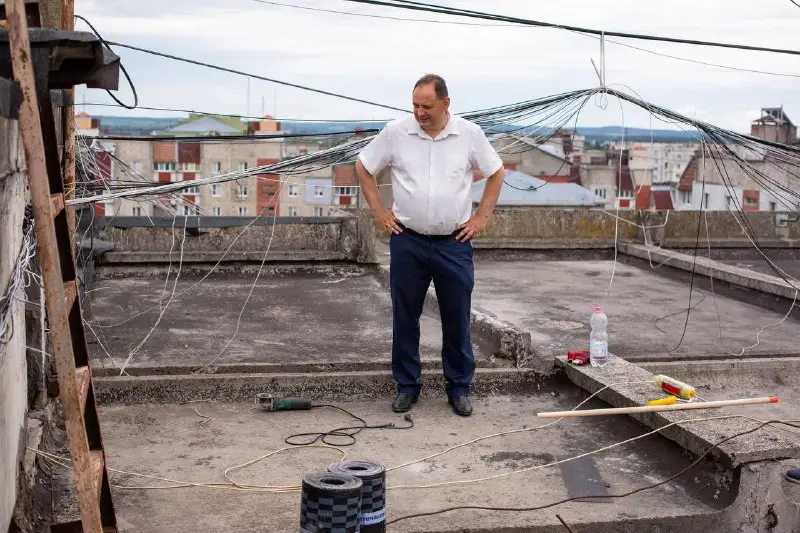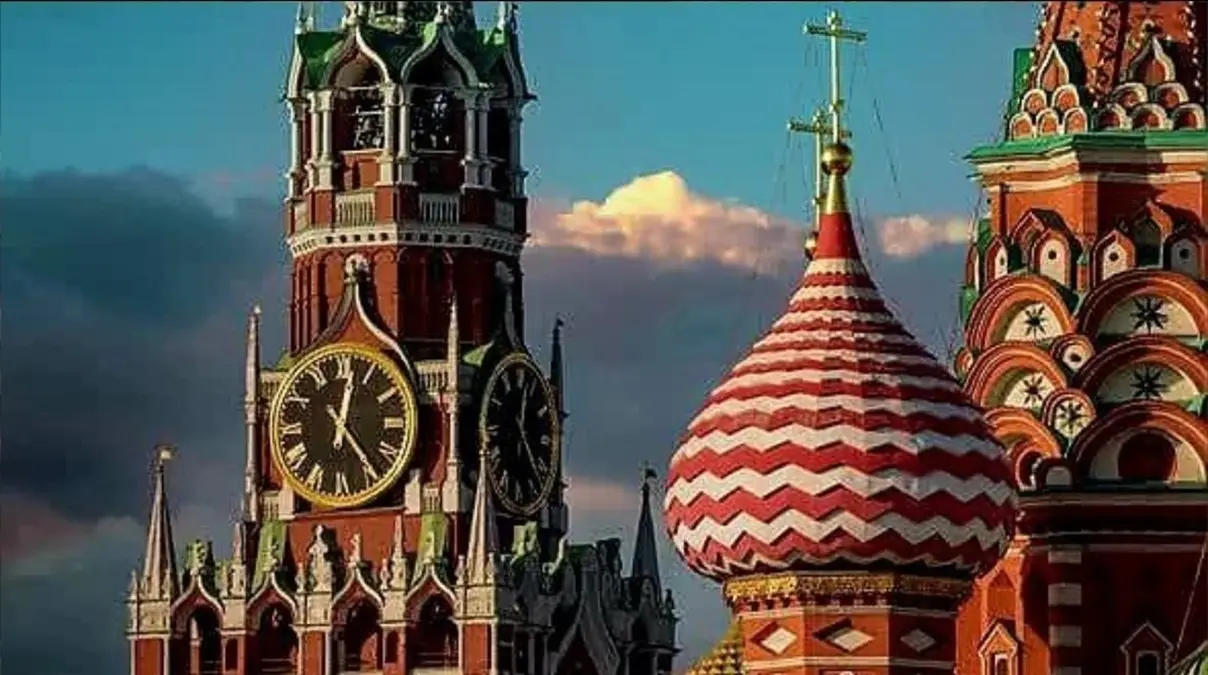Posted by @nsanzo ⋅ 12/07/2025

“Trump is realizing that Putin doesn't want peace, he wants Ukraine. Zelensky is willing to negotiate, but the attacks continue. I'm glad the aid suspension has been reversed,” he said in a recent interview with CNN , the go-to venue for former Republican or Trumpist figures who disown Trump or reject the strategy of inducements and threats with which Donald Trump naively believed he would achieve a quick peace. The US president trusted that his position as Ukraine's main supplier would be enough to force Kiev to resort to diplomacy and that his good relationship with Vladimir Putin would be enough to force the Kremlin to accept an inconclusive plan that would not resolve the most important issue: NATO expansion, which even Trump had accepted as the fundamental cause of the war.
Pence, whose knowledge of the war is as limited as that of his former boss in the White House but expresses the general sentiment of the American and European establishment , is mistaken in his reference to Zelensky's willingness to negotiate. The Ukrainian leader has accepted, largely to avoid alienating the self-proclaimed American peace president, the rhetoric of the need to end the conflict, but at no point has he appealed to a negotiation process. Moreover, Zelensky's preferred option, beyond continuing to receive massive assistance to continue fighting until he is in a position to achieve his political objectives, has never been negotiation, the scenario most feared by Kiev and its European allies, aware that, in war, dialogue is determined by the marked balances on the front lines. Negotiation was not an option in the fall of 2022, since even then, at a time of maximum Russian weakness, Ukraine would not have been able to demand from Moscow its most cherished desire: Crimea. In a much more compromised position since the failure of the 2023 ground offensive, when Ukraine artificially raised expectations to demand more weapons from its allies and provoked strong disappointment when it failed to break through the Zaporozhye front, kyiv would now have far fewer arguments to demand anything from Russia, not even the withdrawal of those territories that the Kremlin was willing to return according to the 2022 Istanbul pre-agreement.
The ideal option for Zelensky and his team, having momentarily lost the option of continuing the progressive escalation that had marked the Biden era, was precisely Donald Trump's favorite: a three-way meeting in which the presidents resolved what could easily be resolved and everything else would be left unresolved. That image would have been enough for the American leader to claim credit and add the war in Ukraine to the list of conflicts he claims to have resolved, using it as another argument in his shameless advertising campaign for the Nobel Peace Prize. That type of resolution , very similar to the summit at which the second Minsk agreement was signed in February 2015 after a night of negotiations between presidents, would also have been satisfactory for Zelensky for the same reasons that the agreement ten years ago was. On the one hand, Ukraine would succeed in preventing further Russian advances, which, although extremely slow, continue to occur on the most important front, the Donbass front—a further analogy to the situation Ukrainian troops found themselves in when Petro Poroshenko agreed to sign the agreement negotiated for him by Angela Merkel. On the other hand, also as then, the process would lead to a negotiating table where, without any viable mediation, it could drag on forever, chronicizing the conflict, justifying the militarization of Ukraine, Russia, and Europe in general, and with no real possibility of resolution. As ten years ago—and like the seven years since—kyiv's negotiating position would be limited to making demands of Russia that did not correspond to the situation on the ground, which, in cases of inconclusive resolution of a conflict, define the peace talks.
During that process, after a war that Ukraine had been unable to win, Ukraine remained firm in its red line of not negotiating any political aspect in any format other than that of presidents, something that is being repeated now. Only decisions made by the Normandy Format, in which the heads of state or government of Germany, France, Ukraine, and Russia participated, were taken into account. Normandy made decisions that were subsequently passed on to the Trilateral Contact Group in Minsk, where they became bogged down in the deadlock from which they would never emerge. Thus, Ukraine failed to recover the lost territories of Donbass, something that was never its priority, but it was not forced to make a concession it was never willing to make: special status for Donetsk and Luhansk, political rights that contradicted the intention of imposing a centralized and nationalist, i.e., anti-Russian, model. Perpetuating the conflict also meant keeping alive the possibility of continuing to claim Crimea in the future and opened the door to demanding arms and funding from its allies on the basis of the ongoing war, always facing the threat that Russia would lose hope that Ukraine would implement the signed agreements and become militarily involved. That possibility did not truly emerge until late 2021, when a series of circumstances unfolded in which Russia clearly saw that the implementation of Minsk was not going to happen, as Ukraine focused even more firmly on achieving its two main objectives: obtaining help to demand the return of Crimea—with the Crimea Declaration, which affirmed that Kyiv would use all means at its disposal to recover the territory—and moving closer to official NATO membership by inviting countries like the United Kingdom to establish military bases in places like Odessa. The escalation of the bombing of Donbass, a tool routinely used to raise tensions and pressure Russia into making concessions, was just one aspect of a strategy to escalate tensions, which Russia responded to with coercive diplomacy , first bringing troops closer to the border and then invading in February 2022.
Nothing was inevitable, and practically until the last moment, the expansion of the war to encompass all of Ukraine and part of Russia could have been avoided by complying with the Minsk agreements and refusing to accept Ukraine as a NATO member. At that time, Ukraine and its allies showed no intention of negotiating either aspect. However, the appearance of calls for peace still persisted, with both kyiv and continental capitals appealing to Minsk as a settlement for which there was no alternative. Only after the Russian invasion did Ukraine and its European allies confirm what had always been evident: kyiv never intended to implement the agreements, as Zelenskyy told Merkel and Macron in 2019, but it used the time to strengthen its military and its relationship with the West.
In his CNN interview , Mike Pence boasted that “under our direction, Ukraine received real support: missiles, not blankets. Putin did not invade the country on our watch.” While it is true that the first Trump administration, whose Ukraine policy was exactly the same as that inherited from Obama and Biden, approved the delivery of Javelin anti-tank missiles, which were hardly useful at a time when there was no attempt by the People's Republics to advance into Ukrainian territory, it was not this supply that prevented an invasion that had much more to do with political tensions than with the supply of weapons. However, it is relevant that Mike Pence, as Donald Trump is also accustomed to doing, boasts about the flow of weapons to Kiev, the effect of which both are willing to exaggerate, as it indicates the current trend.
References to the possibility of negotiations are quickly disappearing from European discourse, which, like Ukraine's, is returning to the dynamics of demanding more weapons, triumphalism about the possibility of victory, and military action as the way to achieve the desired resolution. "Russia's continued massive attacks against Ukrainian civilians are deplorable. Today I urged leaders to take additional steps to ensure Ukraine has more ammunition and air defenses. I just spoke with President Trump and am now working closely with allies to ensure Ukraine receives the aid it needs," Mark Rutte declared yesterday.
The weapons financed with funds approved by the US Congress during the Biden era are running out, and the Trump administration was on the verge of finding itself in a compromising situation, which is somewhat less so if one appeals to the idea that Russia has given up on negotiations. Trump's team managed to obtain the starting positions of Russia and Ukraine, but failed to translate those documents into a negotiation between the parties. The complete lack of trust between Kyiv and Moscow and the incompatibility of their territorial and, above all, security demands made a competent and committed mediation necessary, which simply does not exist. Contrary to Donald Trump's hopes for a quick resolution to the conflict, the war not only has not stopped but currently demands more weapons, especially defensive ones, since, despite constant warnings, Russia still hasn't run out of missiles and has significantly improved its drone capabilities. In this context, Trump would have to choose between abandoning or increasing his involvement. The first option would involve withdrawing, implicitly accepting defeat in their goal of achieving peace, and leaving Ukraine at the mercy of European capabilities to compensate for the loss of US materiel. The second involves abandoning the president's idea of peace—or applying the same definition of peace that has been used in the case of Iran, that is, bombing—and approving new arms deliveries, especially air defense and perhaps the long-range weapons to attack Russia that Andriy Ermak and other members of Volodymyr Zelensky's inner circle are once again demanding.
“Ukrainians, Americans, and Europeans believe in the same things: family, their land, hard work, duty, and the right to protect what is theirs. What unites us is the idea that peace is not weakness, but the result of strength, action, and principles,” wrote Andriy Ermak yesterday. By simplifying the facts, he has managed to convince the entire population of Ukraine, the United States, and Europe—understood as the European Union, the United Kingdom, and Ukraine—to share a single opinion, specifically that of an action that involves more force than peace and that, for the first time in six months, has the approval of the President of the United States. “You'll see what will happen,” Donald Trump provocatively stated yesterday, having announced to the press on Thursday a major statement on Russia for next Monday. It seems clear that the US President is referring both to the approval of the sanctions package proposed by Lindsey Graham and Richard Blumenthal and to the supply of arms.
In this last sense, Axios reported yesterday that "Trump plans to send weapons to Ukraine through his NATO allies." "President Trump is planning to sell weapons to NATO allies with the understanding that they will then provide them to Ukraine, three sources familiar with the discussions tell Axios ," the outlet writes, specifying that part of the White House believes this formula would guarantee supplies without increasing US involvement, a childish trap for someone who doesn't want to accept the failure of what was his flagship foreign policy proposal. Trump would, however, achieve his goal of leaving the financing of the war in the hands of European countries without giving up the revenue that a high-intensity war represents for the country with the largest military-industrial complex in the world. Pending Monday's declaration, everything indicates that the war is heading for a new phase of escalation.
https://slavyangrad.es/2025/07/12/vuelt ... n-militar/
Google Translator
*******
From Cassad's telegram account:
Colonelcassad
0:18
Gladkov on the Ukrainian Armed Forces' attack on Belgorod Arena: the enemy is deliberately attacking peaceful civilian facilities, its mission is terror. The governor posted a video of the attack on the sports complex.
Two social facilities were damaged by Ukrainian Armed Forces UAV attacks in Belgorod. According to preliminary information, there are no casualties.
One of the UAVs hit the Belgorod Arena sports complex, where classes were taking place, resulting in a roof fire — fire crews are working on the scene to put it out.
***
Colonelcassad
Pyongyang will unconditionally support Russia's policy of protecting its territorial integrity and sovereignty, said North Korean Foreign Minister Choi Son Hee.
According to her, the participation of combat units of the DPRK Armed Forces in the operation to liberate the Kursk region clearly demonstrates the highest level of cooperation between the two countries.
The participation of North Korean military personnel in the liberation of the Kursk region confirms the fraternal nature of relations between Moscow and Pyongyang - Lavrov
"The Russian Federation had no reason to refuse to help the DPRK in the SVO, it was a sincere expression of solidarity. The issue of further assistance to Russia in the SVO in Ukraine is decided by Kim Jong-un himself ," the head of the Russian Foreign Ministry added.
Other statements by the head of the Russian Foreign Ministry from the meeting with his counterpart from the DPRK, Choi Son Hee:
- the issue of further assistance to Russia in the special operation from Pyongyang is decided by Kim Jong-un, Lavrov noted;
- the countries plan to resume maritime communication. Putin and Kim Jong-un are in constant contact, personal contacts will certainly continue in the future;
- Pyongyang made the necessary conclusions long before the US and Israel attacked Iran, which ensured security;
- Moscow warns the US and its allies against creating threats to the security of the Russian Federation and the DPRK. Russia will assist in the dialogue between Pyongyang and Seoul only on those issues that are of interest to the DPRK;
- Russia respects and understands the reasons why the republic is developing a nuclear program;
- Moscow does not take seriously attempts to create a "corps of multinational forces to protect Ukraine", this is fantasy;
- Russia and the DPRK consider attempts to create NATO infrastructure in Northeast Asia and in the Asia-Pacific region as a whole to be dangerous.
https://t.me/s/boris_rozhin
Google Translator
******
Comedy-Turned-Farce: Trump Pledges a Whole Ten Missiles to Ukraine
Simplicius
Jul 10, 2025
After failing to coerce Russia into an unfavorable cessation of hostilities (read: surrender), the US is now again playing ‘sanctions’ roulette, which deep state neocon vampire Lindsey Graham has been wedging onto Trump.
The sanctions on Russian energy exports and banking services are meant to ‘degrade’ Russia’s ability to wage the war in perpetuity, given that Western elite are finally coming around to the fact that Russia will not submit, and plans to carry on indefinitely.
NYT writes that Senators Lindsey Graham and Richard Blumenthal are preparing a bill on new sanctions against the Russian energy sector, which could lead to a global collapse of energy markets and a global recession. At the same time, the publication indicates that there is no panic in Moscow. Russia is used to sanctions pressure and is quickly adapting.
But there is still some equivocating that’s clearly meant to give Trump the ability to play both sides, as usual—i.e. to simulate the ‘tough guy’ via some marquee sanctions bill, yet still have the ability to diplomatically sanitize and dial them in as needed, as a sop to both sides.
Rubio implies as much: (Video at link.)
Similarly, MSM now reports that Trump may initiate the first ever completely new arms package to Ukraine under his administration—in contrast to the Biden-era carryover PDA that was still squeezing out some last few drops.
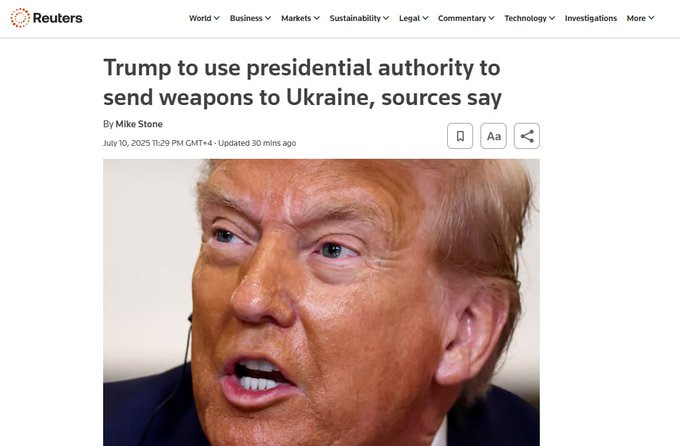
https://www.reuters.com/world/europe/tr ... 025-07-10/
But, again, is there more than meets the eye?
Firstly, there’s talk of a paltry $300M PDA (Presidential Drawdown Authority) package, which effectively amounts to a handful of missiles, depending on weapon system. Even Biden’s PDA had nearly $4B remaining to disburse.
Secondly, as part of his new package Trump reportedly has pledged to send “10 Patriot missiles” to Ukraine:
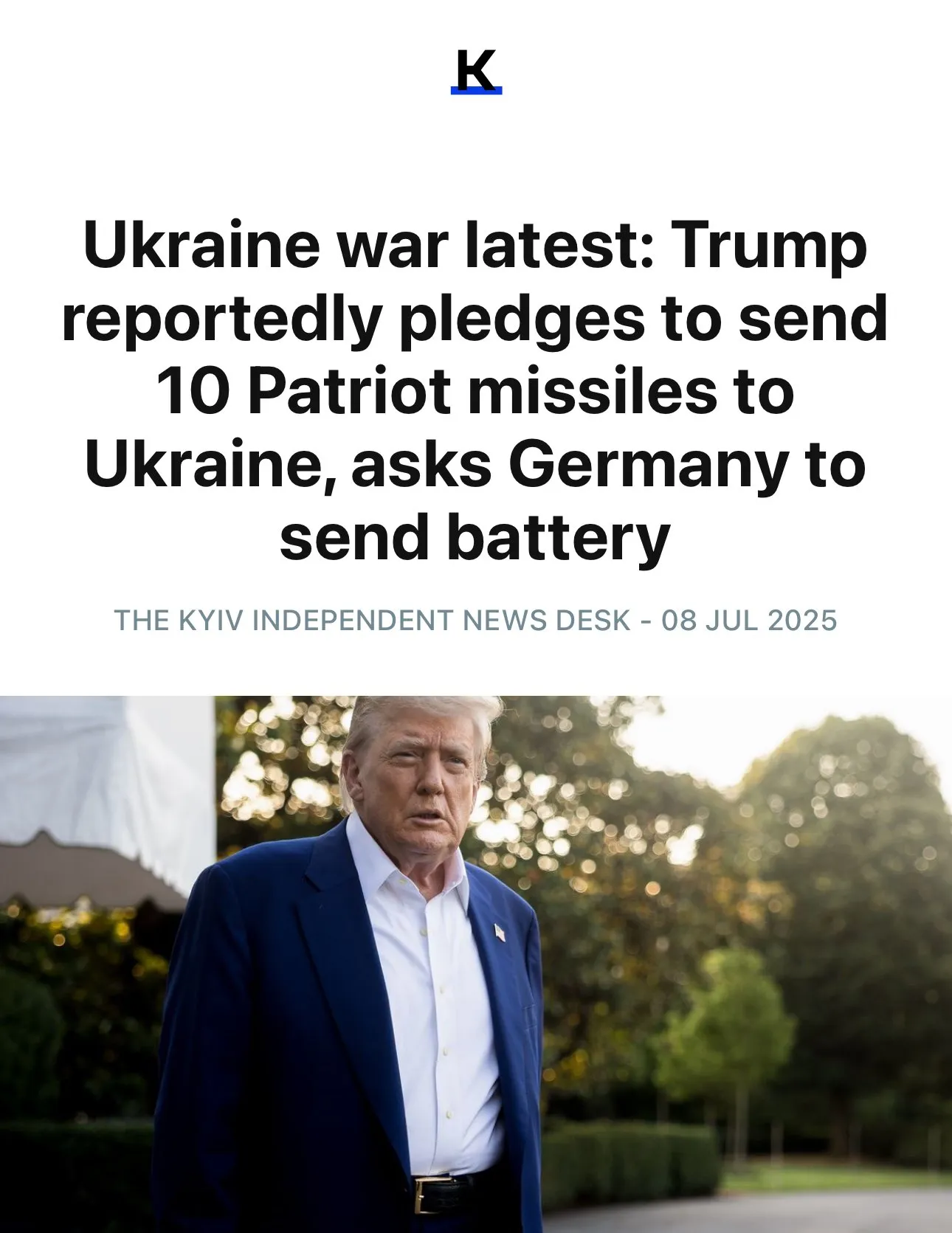
https://kyivindependent.com/ukraine-war ... y-06-2025/
You’re probably thinking—that’s 10 full missile launchers, a hefty offering!
But—mind-blowing as it may sound—the 10 missiles appears to refer to just that: 10 actual missile interceptors; as in, the ammunition.
In the article, Trump asks Germany to send a fully battery while he sends 10 missiles. This is a strange request, as 10 missile launchers would represent a battery themselves, thus the distinction would not be necessary to make. In fact, that is almost two batteries, with each battery costing upwards of $2.5B dollars in export terms; $5B is an extremely unlikely amount from Trump, given that his new package aims to gift a mere $300M, as stated earlier.
Also, the previously-‘frozen’ aid verifiably contained “30 Patriot missiles”—as in, the actual ammunition itself—as can be cross-checked through various mainstream sources. Here, Reuters:

So, if this much-vaunted shipment generated so much bafflegab over a mere 30 missiles, then it’s conceivable Trump’s announcement of an additional 10 pertains to the ammunition. Keep in mind, Patriot PAC-3 MSE missiles cost upwards of $10M each. That means another mere 10 missiles would be as much as $100M, which certainly makes sense within the context.

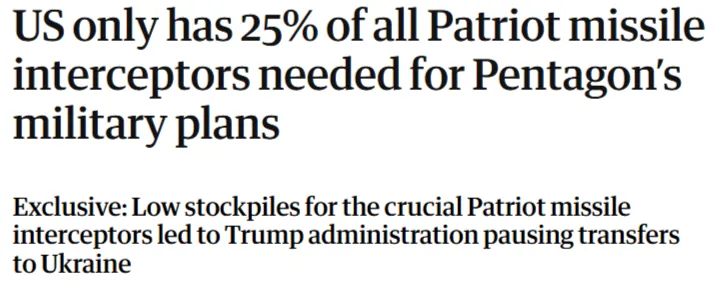
https://www.theguardian.com/us-news/202 ... nterceptor
If that’s the case, then we should be gobsmacked at this theater of the absurd: all this noise for a mere 10 missiles that will be fired off in three or four seconds during Russia’s next attack?
Just last night, Russia again broke the record, this time walloping Ukraine with over 700+ drones and missiles in a single night. (Video at link.)
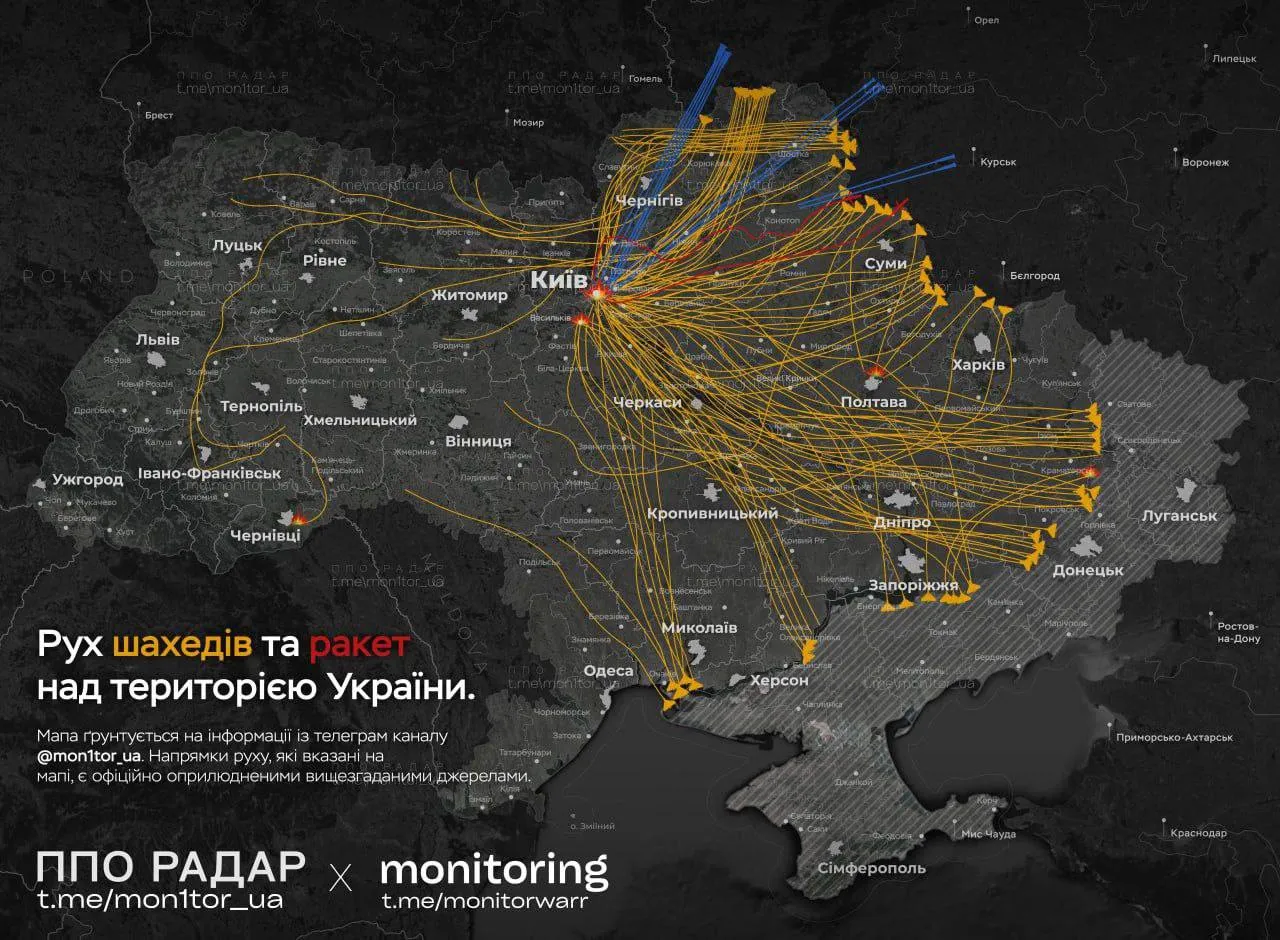
What are the miserable 10 missiles supposed to do against that? Clearly, one can see the deliberate duplicity and delay games in this farcical show.
The last reason to doubt the 10 refers to launchers is Rubio’s statement regarding other nations needing to foot the bill to send their launchers to Ukraine, implying US shouldn’t have to send any more: (Video at link.)
Of course, we all know whether it’s 10 measly missiles or 10 batteries, it makes no difference in the end. At $10 million per missile, you’re looking at a cost of $7B per day in intercepting Russia’s 700+ Geran drone attack. Multiple Ukrainian figures have recently put forth that Russia will soon be launching 1,000+ daily Gerans.
Now Trump has told NBC that he will be making some ‘big statement’ on Russia on monday—presumably, something having to do with the sanctions.
If some form of stronger sanctions do go through, it would merely be part of the same old European plan to box Russia’s merchant fleets in—plans which are developing daily in dangerous directions.
For instance:

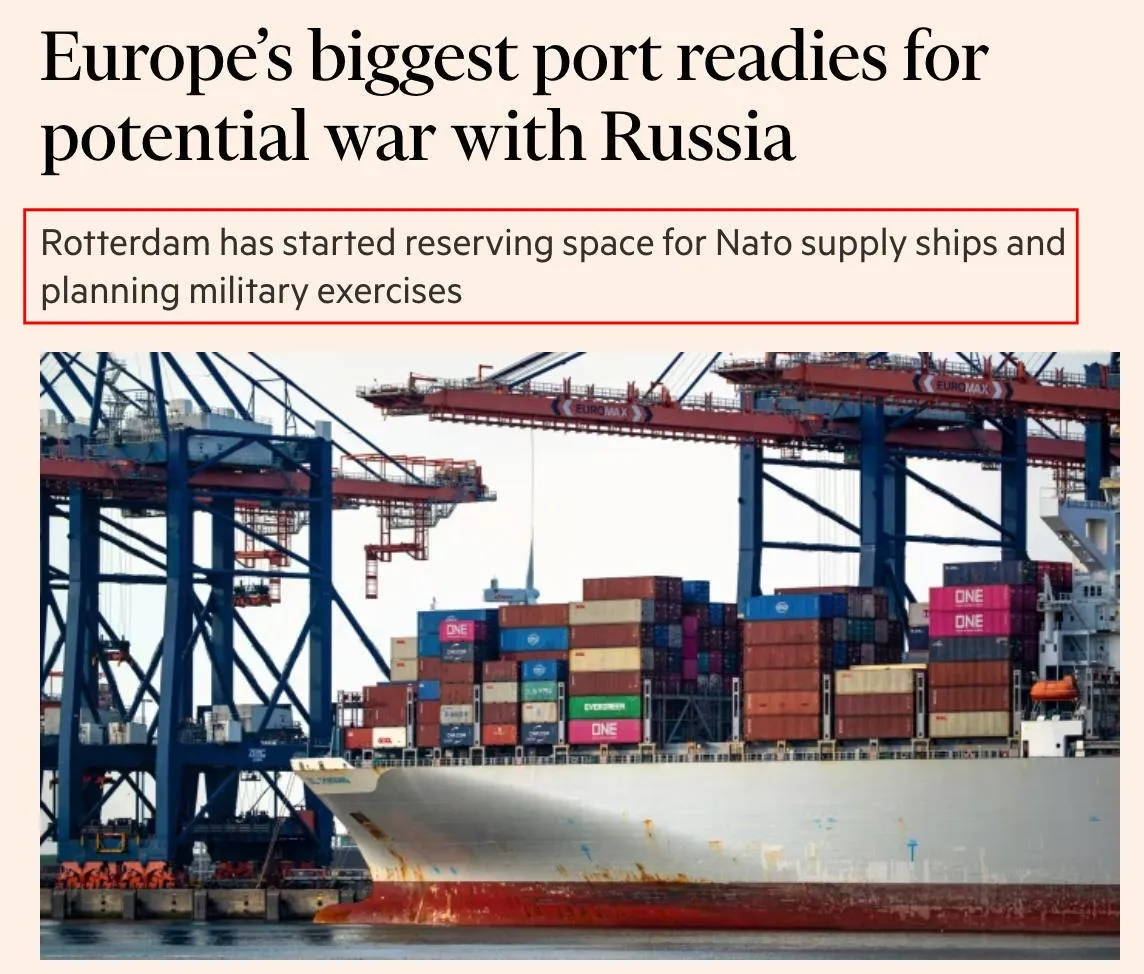
https://www.ft.com/content/0c42af06-213 ... 0494794c98
Recall the duplicitous game: boot Russian ships from the international insurers’ markets, then “require insurance” in waters entirely controlled by arbitrary EEZs to effect “legal piracy”.
From another source:
Sweden has now announced that starting on July 1 its navy will stop, inspect and potentially seize all suspect vessels transiting its exclusive economic zone, and is deploying the Swedish air force to back up this threat. Since the combined maritime economic zones of Sweden and the three Baltic states cover the whole of the central Baltic Sea, this amounts to a virtual threat to cut off all Russian trade exiting Russia via the Baltic — which would indeed be a very serious economic blow to Moscow.
It would also threaten to cut off Russia’s exclave of Kaliningrad, which is surrounded by Poland, from access to Russia by sea.
Meanwhile, Russia has continued escorting its so-called “shadow fleet” ships:
An analyst from Starboard Maritime Intelligence Ltd reports that the tankers SELVA and SIERRA passed through the English Channel at the same time as the corvette BOIKOY of Project 20380 of the Baltic Fleet of the Russian Navy. This is the first recorded escort of Russian tankers by Russian warships (through the English Channel).
Just in case, Russia has also been bulking up some of those phantom reserves we’ve talked so much about.
Russia Expands Military Presence Near Finnish Border
Fresh satellite imagery published by Western outlets shows that Russia is constructing a new military complex near the Finnish border — a clear sign of long-term troop reinforcement in the region.
Significant earthworks and new facilities have appeared at the Lupche-Savino garrison, part of the city of Kandalaksha in Murmansk Region, roughly 110 km from Finland. According to reports, two brigades have already been relocated to this area.
Satellite photos also reveal expansion at the Sapyornoye garrison on the Karelian Isthmus, located about 70 km from the Finnish border.
Russia is simultaneously continuing preparations in Petrozavodsk, the capital of Karelia. The city houses the command of a mixed aviation division, which oversees the Besovets airbase nearby.
Notably, Russia is forming a completely new 44th Army Corps in the Republic of Karelia — a move that effectively adds around 15,000 troops to NATO’s eastern frontier.
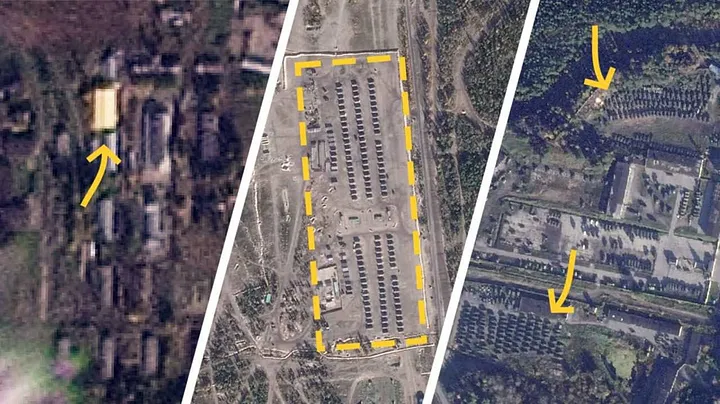
Don’t be surprised to see many of the freshly-produced T-90Ms there.
The US sanctions, either way, happen to be stillborn, as skeptical WaPo already informed us last time:
On paper, a bill from Sen. Lindsey Graham (R-South Carolina) attempting to enact the toughest and most far-reaching trade sanctions on Russia to date ought to please supporters of Ukraine. But there’s a problem: As bold as the legislation is, it would amount to launching a trade war with nearly the entire rest of the world, cutting off America’s nose to spite Russian President Vladimir Putin’s face.
In the meantime, Ukraine fatigue ramps up in the West. Polish president Duda has made quite a provocative statement, essentially threatening to close down the Rzeszow airport weapons pipeline into Ukraine, which is by far the most critical NATO weapons node: (Video at link.)
—
As a closing item, snake-oil salesman ‘Hissing Hegseth’ released this cringe-worthy new PR spot to announce the coming age of American ‘drone dominance’: (Video at link.)
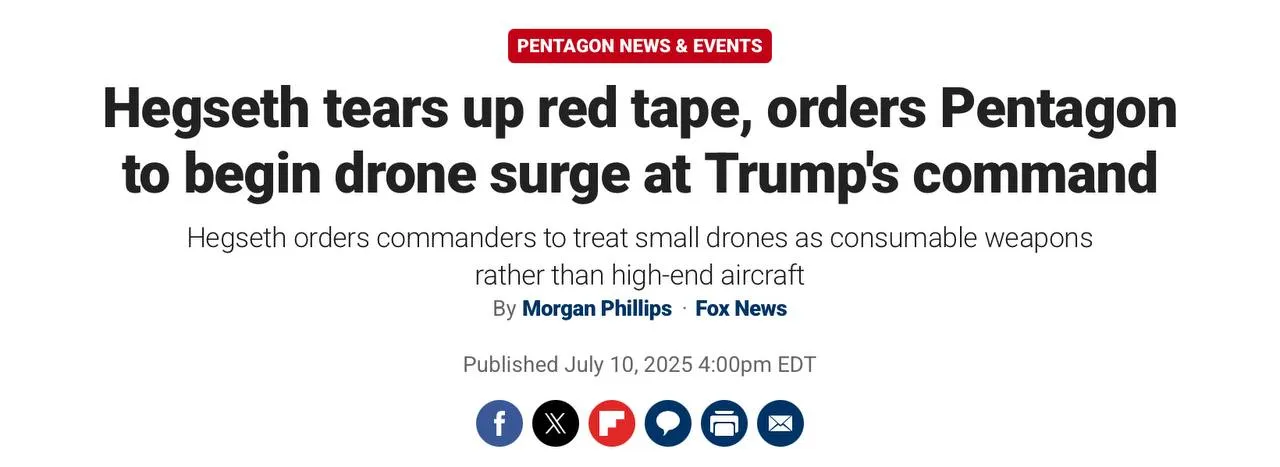
It seems under Trump America continues its Dionysian humiliation ritual. Either that or its transformation into some kind of kitschy, campy, post-capitalist dystopian weapons bazaar-cum-casino resort.
You know, the sort of place this White House renovation is fit to symbolize:
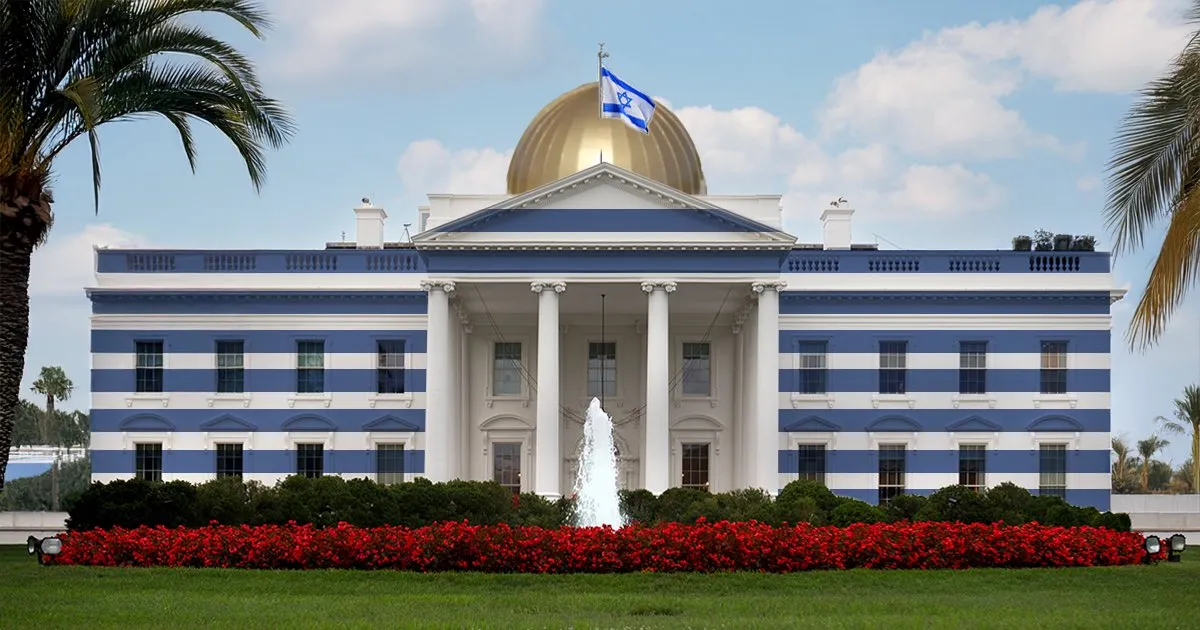
https://simplicius76.substack.com/p/com ... mp-pledges
******
It’s A Smart Move For Russia To Strike Ukrainian Draft Centers
Andrew Korybko
Jul 11, 2025
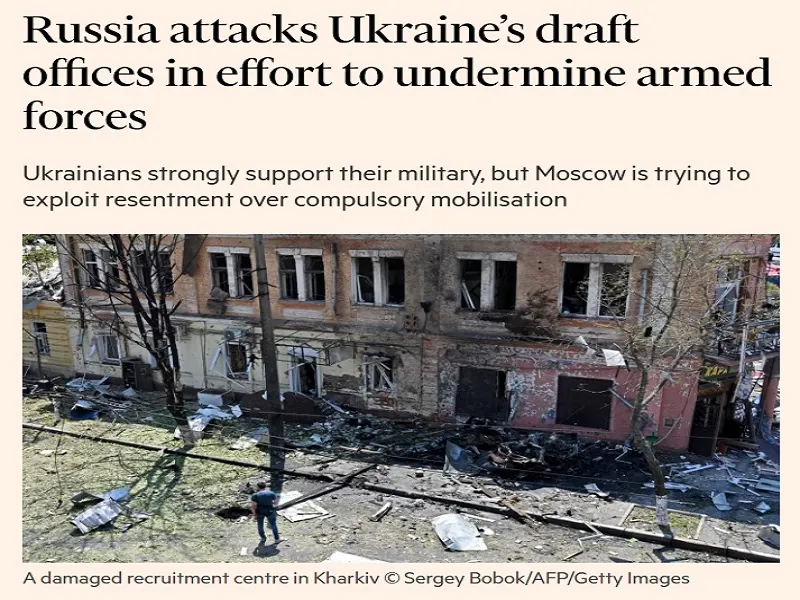
This could raise the chances for a breakthrough somewhere along the front, help to decisively shift domestic public opinion against the conflict, and thus make it easier for “deep state” forces to conspire against Zelensky.
The Financial Times (FT) reported that “Russia attacks Ukraine’s draft offices in effort to undermine armed forces”, which drew attention to its latest strategy nearly three and a half years into the conflict. What began as a special operation quickly transformed into a proxy war that’s since become a “race of logistics”/“war of attrition”. Accordingly, without Trump coercing Zelensky to comply with Putin’s demands for peace and given his promise to send more “defensive weapons”, the conflict will continue.
It therefore makes sense that Russia would finally target Ukraine’s military logistics, particularly its draft centers, with a view towards preventing Kiev from replenishing its frontline losses in order to consequently raise the chances of a game-changing breakthrough somewhere along the front. Russia still won’t destroy Ukraine’s bridges across the Dnieper, possibly for the reasons speculated here last year, but striking its draft centers is better than nothing and could give also Russia a soft power edge.
As the FT acknowledged in their report, these draft centers are incredibly unpopular among the people, so it therefore follows that Russia’s destruction of them could lead to average Ukrainians breathing a sigh of relief and perhaps becoming more inclined towards a political solution to this long-running conflict. Those that already were anti-Russian or became so throughout the course of the hostilities might not change their political views, but what’s important is that they might not oppose concessions to Russia.
To be sure, the primary reason why Zelensky doesn’t want to comply with any of Putin’s demands for peace is because it could set into motion fast-moving events that remove him from power, but public opinion also plays a role in falsely justifying this self-interested position to the population. The independent organization of large-scale protests is practically impossible in Ukraine nowadays due to the SBU’s domestic dominance, but decisive shifts in public opinion could prompt a power struggle.
That institution and/or others could potentially see an opportunity in that scenario to allow some controlled protests for the purpose of pressuring Zelensky “from below” into doing what’s needed to end the conflict, which could then legitimize pressure upon him from their institution(s) too. The goal would be to remove him from power, even if only through the new elections that he promised would shortly follow the end of the conflict, and then potentially profit from lucrative reconstruction contracts.
For as compelling as this sequence might seem, it can’t be taken for granted, but the possibility still remains that Russia might at least obtain a soft power edge if it continues striking these draft centers. More average Ukrainians will likely appreciate that since they don’t want to die for Zelensky. Even JD Vance recognizes this reality as proven by him telling the world in late February during his fight with Zelensky in the White House about Ukraine’s forcible conscription policy and recruitment problems.
It's therefore a smart move for Russia to finally start striking Ukrainian draft centers since this could raise the chances for a breakthrough somewhere along the front, help to decisively shift domestic public opinion against the conflict, and thus make it easier for “deep state” forces to conspire against Zelensky. Russia has nothing to lose and everything to gain by keeping up and possibly expanding these strikes since they hit Zelensky where it hurts in more ways than one.
https://korybko.substack.com/p/its-a-sm ... -to-strike
******
SBU Colonel Eliminated in Kyiv Participated in Organizing the Murder of "Motorola"
July 11, 21:00
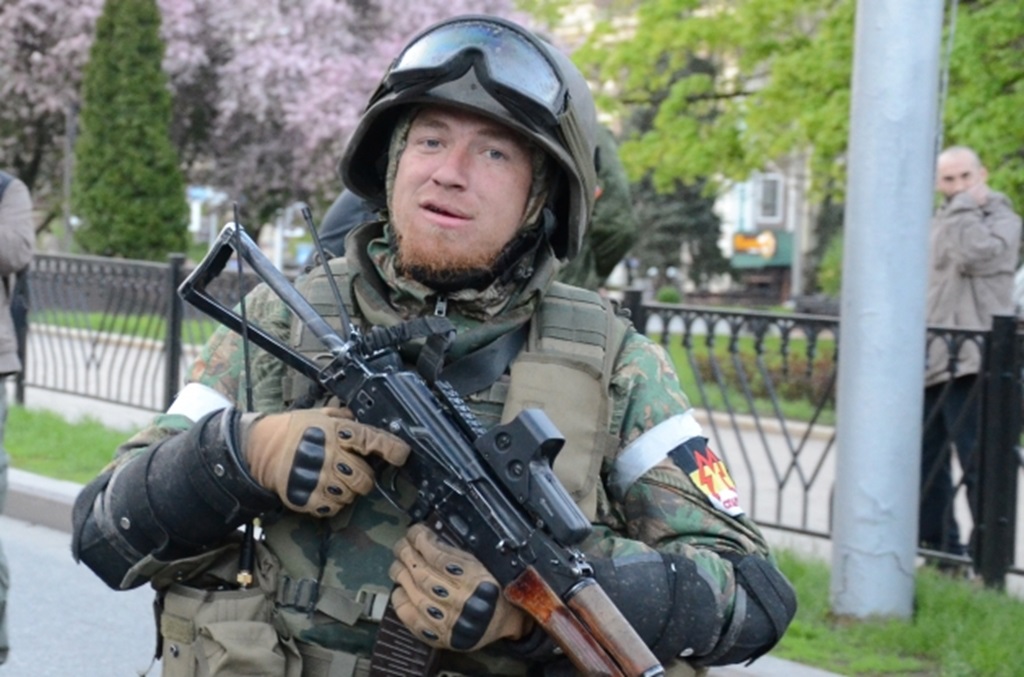
The NYT reports that SBU Colonel Voronich, who was killed yesterday in Kiev by an unknown shooter, was involved in organizing the murder of Sparta Battalion commander Arsen Pavlov (call sign "Motorola"). If this is true, then retribution for the murder of "Motor" came 9 years later. But of course, Voronich was not the only one involved, so...
"Motorola" was blown up in an elevator in Donetsk in 2016 after a series of unsuccessful assassination attempts.
https://colonelcassad.livejournal.com/9949989.html
Strikes on Ukraine. 12.07.2025
July 12, 13:21

Strikes on Ukraine. 12.07.2025
Based on the results of the night strikes.
Last night, the enemy was hit by fire from 300 Geran-2 UAVs. The strike was accompanied by a corresponding number of false targets, for which the enemy was forced to spend a significant amount of expensive air defense ammunition.

The attack scheme according to the enemy.
The strike of 110 UAVs hit the Lviv ARZ.
The strike of up to 100 UAVs hit the Motor plant in Lutsk.
The strike of up to 50 UAVs hit the Chernivtsi airfield, where the enemy stored long-range aviation ammunition, as well as missiles for the air defense system.
The strike of up to 50 UAVs hit the Kanatovo airfield.
In addition, strategic aviation aircraft carried out massive strikes with Kh-101 missiles on the Lviv ARZ, the Lutsk Motor plant, and the warehouses of the Chernivtsi airfield.
A very successful raid, the enemy's air defense continues to lose the initiative.
P.S. In the photo, a hole in the body of the Elektron plant in Lviv. Missile system components and avionics elements were manufactured there.
It can be noted that instead of spreading Geraniums over a bunch of different targets, the Russian Armed Forces have already clearly switched to a scheme with massive raids on a group of objects in order to maximize damage.
Lots of photos/videos of night and morning strikes as usual in Telegram https://t.me/boris_rozhin/172180 (if you are interested, subscribe)
https://colonelcassad.livejournal.com/9950861.html
Google Translator
******
Brief Frontline Report – July 11th, 2025
Report by Marat Khairullin and Mikhail Popov.
Zinderneuf
Jul 11, 2025
The Russian Ministry of Defense reports: "Units of the "West" Group have liberated the settlement of Zelenaya Dolina in the Donetsk People's Republic through decisive combat operations."
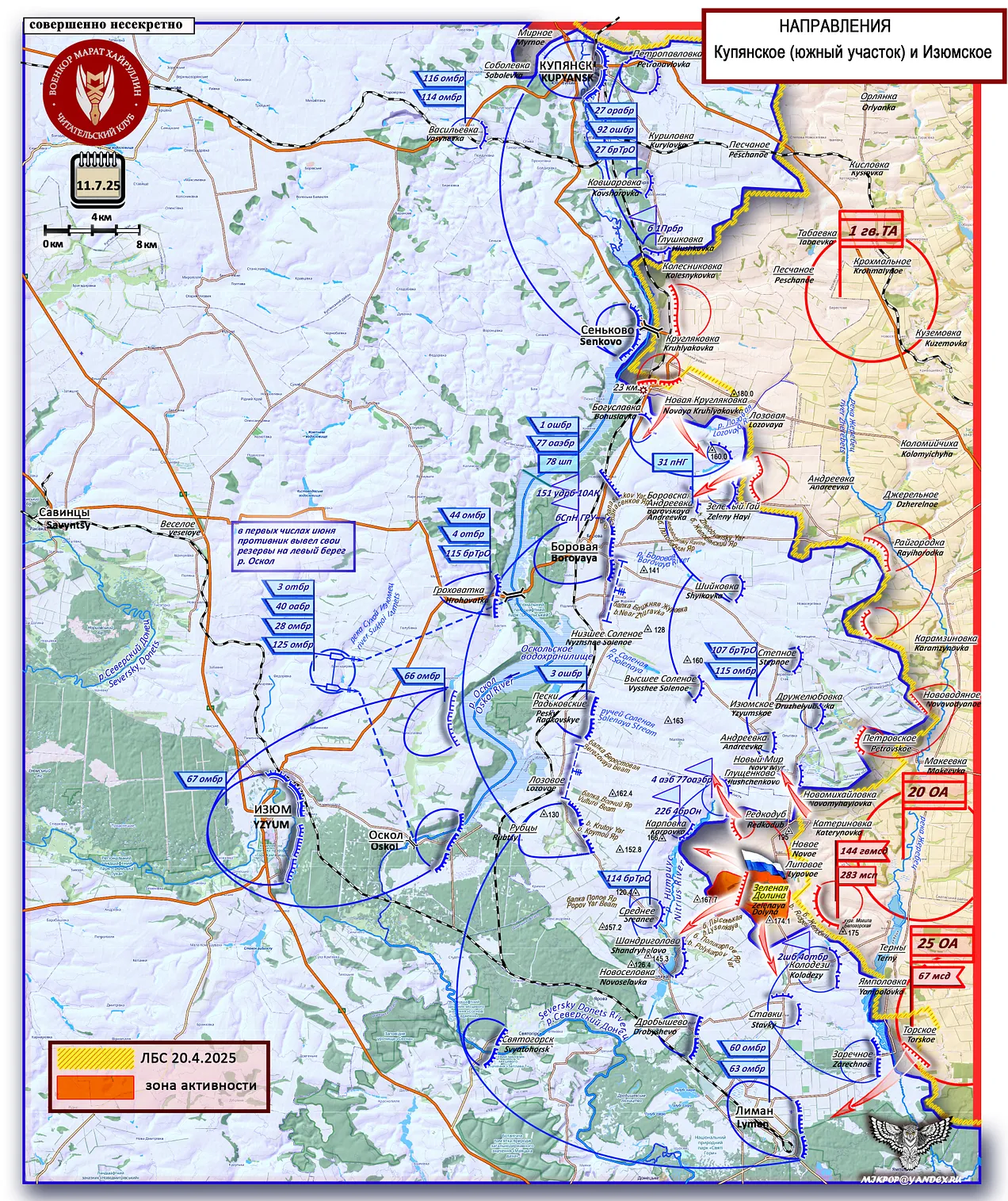
ЛБС 20.4.2025=Line of Combat Contact April 20th, 2025. Зона Активности=Zone of Activity.
On the Kupyansk-Torskoye situation map, we observe the enemy's defensive salient along the Peski Radkovskye-Novodyanoye line (Look south of Borovaya and when you find the former, look straight east all the way to the edge of the map). From April 20, 2025 to present, the most significant advances along the line of contact have occurred at the northern and southern faces of this bulge (Kruglyakovka-Novaya Kruglyakovka and Redkodub-Zelenaya Dolina). Anticipating the threat of this salient being cut off and Russian forces reaching the Oskol River, in early June the enemy deployed reserves to the east bank of the Oskol River, where they established defensive strongpoints along the Borovaya-Oskol line. This line represents the AFU's primary defensive position, anchored by the Oskol Reservoir (just north of Peski Radkovskye) and protecting both the right flank of their Kupyansk direction defenses and the left flank in the Izyum direction.
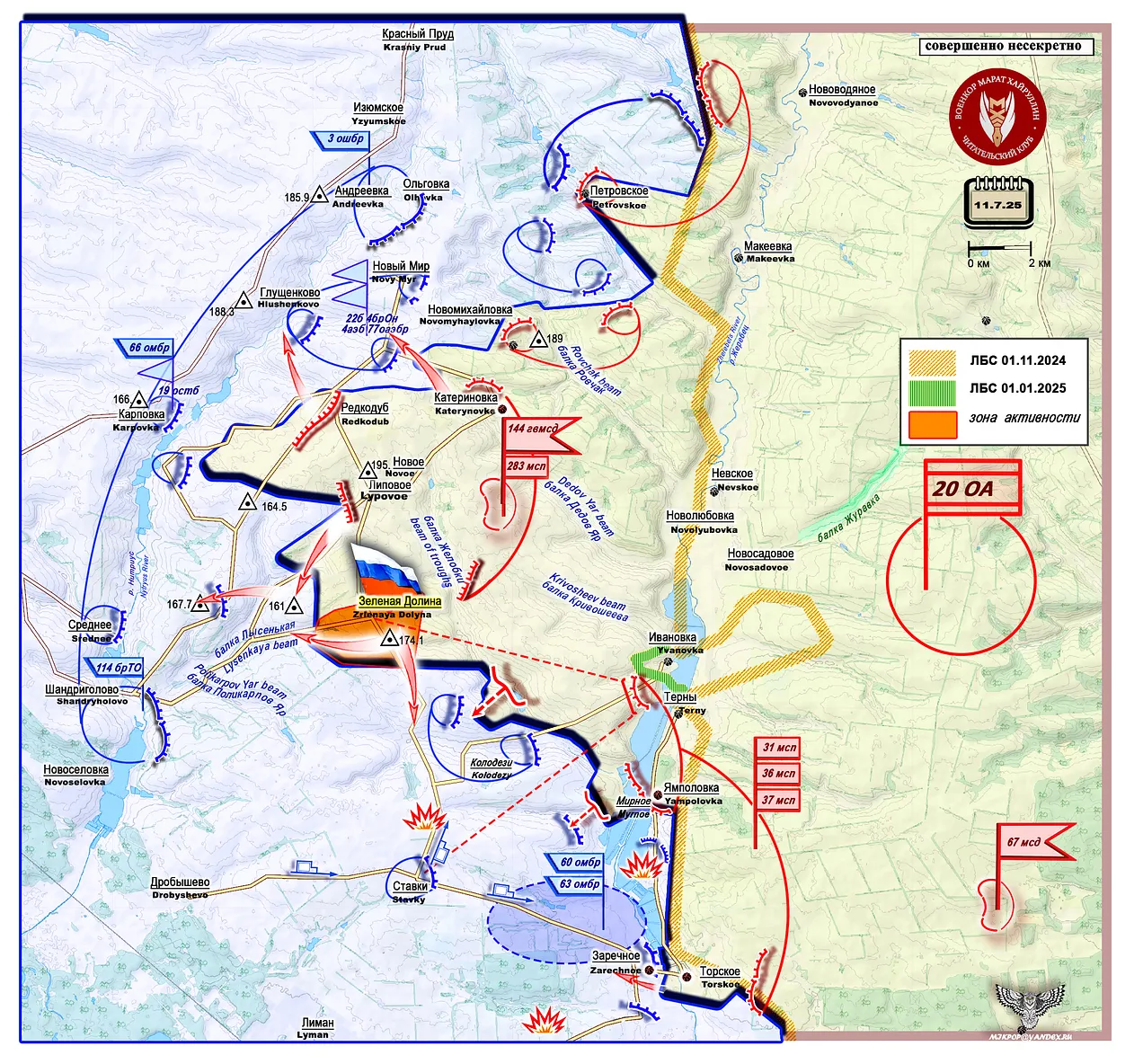
ЛБС 01.11.2024=Line of Combat Contact November 1st, 2024. ЛБС 01.01.2025=Line of Combat Contact January 1st, 2025. Зона Активности=Zone of Activity.*
For their forward defensive line, the AFU has utilized the Nitryus River along Glushchenkovo (Hlushenkovo)-Shandrigolovo (Shandryholovo)-Novoselovka, where the river is at its widest with a cascade of ponds and its confluence with the Seversky Donets, while further upstream near Glushchenkovo it nearly dries up. A frontal assault on this position appears unlikely. Flanking from the south would be particularly challenging as the defense there is based around the urban areas of Shandrigolovo, Novoselovka, and Drobyshevo, protected by the Seversky Donets riverbed.
The northern approach near Glushchenkovo presents more favorable conditions as the river ceases to be an obstacle and a road network begins. This area represents the most likely avenue for outflanking the AFU's forward defenses. Recognizing this vulnerability, the enemy has established defensive positions in the Glushchenkovo-Novy Mir sector to protect this flank.
Given these conditions, the most probable course of action involves reconnaissance-in-force operations toward Novy Mir-Glushchenkovo, maintaining constant pressure on this sector to identify and exploit weaknesses. The main operational focus is expected to develop southward toward Kolodezi-Zarechnoe-Stavki.
https://maratkhairullin.substack.com/p/ ... -july-11th


























